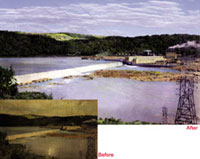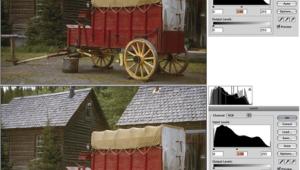Going Digital
A Photographic LightRoom
My wife, Faye, and I started
our "mom and pop" photographic studio in the early 1980s.
We did it all. We shot weddings, kids, models, dogs, and the occasional
commercial job. One friend called it the "brides, brats, and bimbos"
business! Our basic bread-and-butter work, however, was weddings. We
shot over 60 weddings in one year when we were at the height of our
wedding shooting activities. |


















































